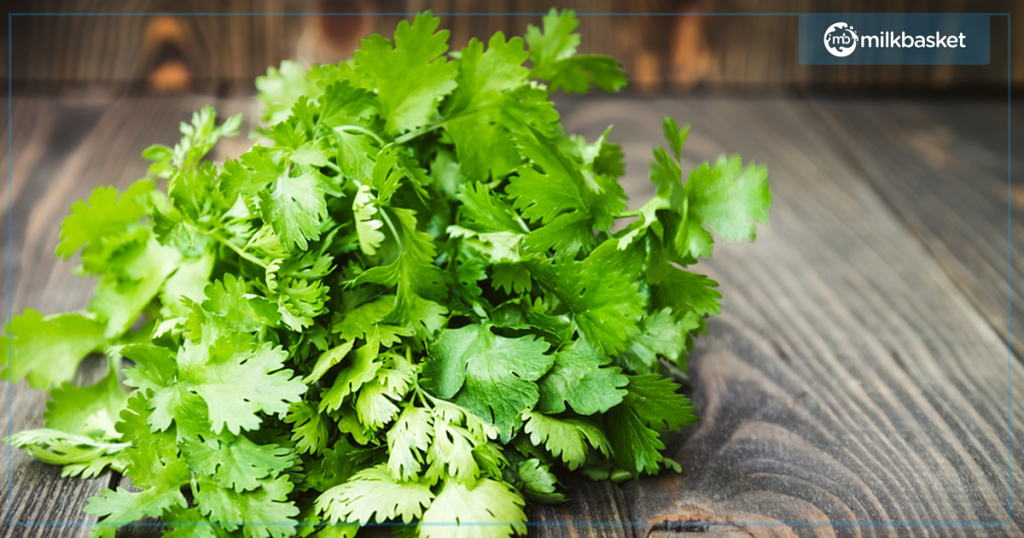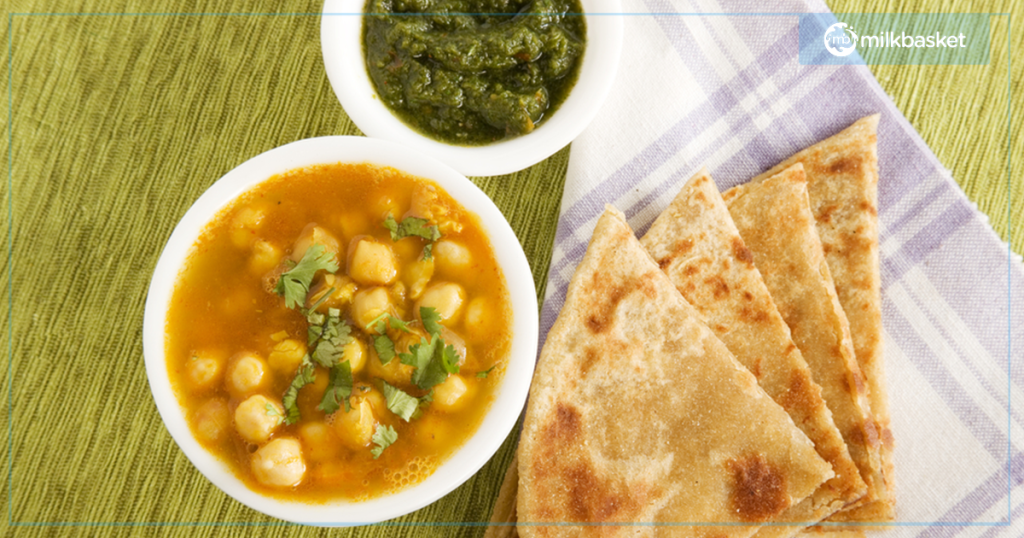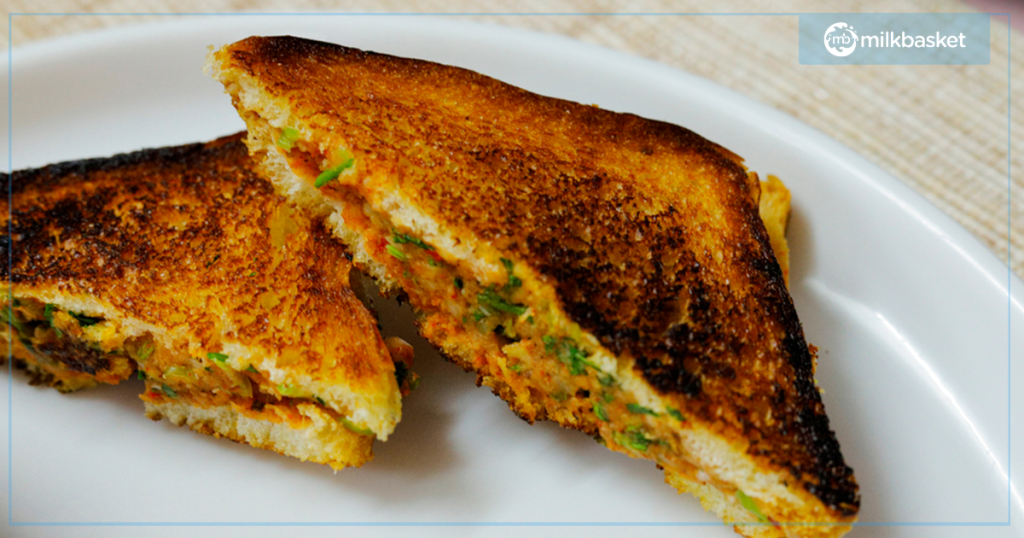Green Chutney | The History, Recipe, and many Delicious Ways to Eat It
Green Chutney is relished throughout India. Different regions of our diverse country have their own, tweaked versions of it. However, green chutney everywhere is tasty and has numerous benefits for digestion as well (if prepared responsibly, of course).

The reason why we love it so much is that it is a perfect balance of spice, salt, tanginess, and freshness. In this article, we will be specifically talking about the spicy, tangy green chutney made commonly in North Indian homes with dhania (coriander), pudina (mint leaves), and pyaaz (onions) as the primary ingredients.
The intention of this blog is to give you a little bit of information about a few topics, such as: –
- Origin & History of Indian chutneys
- A special green chutney recipe that my mother makes at home
- Introduce you to some ways that we love to consume Green Chutney at home
Origins of the Indian Chutney
The word chutney, or ‘chatni’, is originally from the Hindi language, arising from the word ‘chaatna’ or चाटना, which means ‘to lick’. So, in its essence, the word chutney basically means something that is extremely ‘lickable’, and rightfully so. Chutneys are used as condiments, sauces, dips, and spreads, and usually leave us licking the skin off our fingers!

Food historians believe that chutneys most likely first originated in the regions of South Asia close to 500 BC, nearly 3000 years ago. People were using all kinds of ingredients, from meat to chilli peppers, fresh herbs to vegetables and fruits, to make preserves and pickles. When the British came to India, they discovered the concept of chutneys and took them back to Britain as well as their other colonies.
The British and European renditions of chutneys use fruits, sugar, vinegar etc and have a ‘jam’ or ‘relish’ like taste to them. They have a sweet and sour bend to them, while their Indian precursors were mostly spicy and rarely sweet.
Popular folklore about the Green Chutney
There is a popular folklore about how Green Chutney came into being as a digestive aid that was also delicious.
It is said that in the 17th Century, Mughal Emperor Shah Jahan had once fallen ill. His ‘haqeem’ or doctors advised that he eat something that was spicy and nutritious as well. That’s when this digestive dish was prepared using fresh mint leaves, coriander leaves, lemons, fresh green chillis, garlic, etc.
So next time you or your mother makes green chutney at home, know that you’re eating the royal food.
My mother’s Green Chutney Recipe with a special healthy tweak
Traditionally, the green chutney you’ll find mostly in North, Northwestern, Western, and Central India is typically tangy, fresh, and spicy. Every chef has their own tweaks that they add to the recipe based on their tradition and personal preferences.
This recipe is by far what’s mostly followed in most typical North Indian homes of Delhi, Haryana, Punjab and Himachal Pradesh. However, my beloved mother has her own proportions and tweaks that she likes, which I have inherited from her. Her secret ingredient is ‘amla’ or ‘aavla’ or the Indian gooseberry.

The Indian Gooseberry (or amla) are small, highly nutritious fruits that can be eaten raw and whole. However, they are quite sour because of being rich in Vitamin C and are usually used in pickles and spices or added to recipes. Their benefits have been used in Ayurvedic Sciences for more than 1000 years. A 100 g of amla has Vit-C that’s equivalent to 20 oranges. The nutrients present in them are extremely good for hair, vision, memory, digestion, Diabetes management, & much more.
My Mother’s Special Green Chutney Ingredients
Here is the list of ingredients you’d need for the perfect recipe. However, I will also mention alternatives for those ingredients and also if they can be skipped altogether.

Skipping the ingredients may change the flavour and taste profile a bit, but hey, good food is just good food, right? You’ll experiment and create something different and just as delicious.
| Ingredient | Quantity | Alternatives |
| Coriander | 150 g approximately | |
| Onion | 1 medium-sized | |
| Green Chillies | 2-4 (based on how spicy they are) | |
| Mint Leaves (optional) | 8-15 leaves (based on size) | |
| Salt | ⅓ tbsp or as you prefer | |
| Garlic (optional) | 2 cloves | |
| Amla or Indian Gooseberry | 2 pcs | Juice of 1 medium-sized lemon OR ⅓ tbsp of anardana powder OR ⅓ tbsp amchoor (mango powder), OR 3-4 tbsp of dahi (curd) |
Steps to My Mother’s Special Green Chutney Recipe
- Properly wash the coriander (dhania) and the mint leaves separately with water. They usually have dirt on them from all the travelling & transportation. If you don’t wash them properly (and I’ve made this mistake before), you might taste dust particles crunching in your mouth when your green chutney is done. That feeling, dear friends, is not appetizing at all!
- Chop 60-70% of the bare lower stems of the coriander. This will help maintain a rich and fresh flavour profile. You don’t want a weird texture and tastelessness in your product, no!
- Remove the mint leaves from the stems. Mint stems are not edible for humans. You’ll only need 8-15 leaves of the pudina (mint), based on the leaf size. If they’re small, take 12-15. If they’re medium-sized, stick to 8-10.
- Chop the onions into medium to small-sized pieces. This will help provide great consistency to your chutney. Just the way my mom likes it!
- Remove the crowns of the Green Chillies. Crowns are only for queens and kings like you and me. Your recipe doesn’t need them!
- De-seed the Amla. We only need the pulpy flesh. Their seeds aren’t edible. Also, they’re quite hard. So if you add the gooseberries whole, you risk breaking your grinder!
- Add all this to the grinder and grind until only slightly viscous and pulpy. That’s the way my mother makes it and we LOVE it! If you make the consistency finer and more watered down, it’s good to be used as a sauce or topping to your chaats or rice bowls. However, if you wish to use it as an accompaniment to your bread-based meals, I’d advise you to keep it slightly pulpy.
- Voila! Serve it, store it, sell it, savour it – your call!
Ways to make your food more delicious with Green Chutney
Have it with plain or stuffed Parathas

Sometimes in life, all you have is a paratha and a green chutney – and it’s great! It breaks the monotony, has a nostalgic feel to it, and sometimes that’s all you need.
Make your normal daily meals special with Green Chutney

Whether it’s roti and sabzi or dal and rice. Green Chutney can be a great addition or replacement for achaar and will make your daily lunches so much tastier and more satisfying.
Green Chutney makes Sandwiches LAZEEZ

When it comes to sandwiches, I love to spread green chutney generously on both toasts. Whether it’s my humble ham and cheese sandwich or the flavourful aloo-masala sandwich. Green Chutney takes sandwiches to another level! Mumbaikars know just how to do it right – and they’ve been championing it with the Bombay Masala Sandwich.
Make your daily DAHI diet delicious

I love to eat Dahi with my meals. I’ll usually add a pinch of salt and roasted cumin powder to add taste. However, just add a spoonful of green chutney to your bowl of curd to make it even more delicious!
Did you like this recipe? Share with us your versions of the Green Chutney in the comments below! Interested in some other homemade dips for your snacks? Read this article for easy homemade dips.
Categories
Popular Posts
-

4 Eco-Friendly Decorations for Ganesh Chaturthi
Spread the loveLooking for sustainable eco Ganpati decoration ideas as Ganesh Chaturthi approaches on August 26, 2025? You’re not alone in wanting to celebrate Lord Ganesha while protecting our environment. This festival season, you can create beautiful decorations that honor tradition without harming the environment. Milkbasket understands your need for convenient online grocery delivery during […]
19 Aug 2025 read More... -

Milkbasket – A Revolution In The Online Grocery Delivery Services In India
Spread the loveThere’s no denying the fact that the pandemic has drastically changed the way people spend their time online, buying everything through various online retail platforms with the convenience of home deliveries in India. Milkbasket, with it’s features has proven to be a revolution in the online grocery delivery services in India. While stepping […]
08 Jul 2022 read More... -

Milkbasket’s Latest DVC Campaign Is Out, And It’s Quirky And Relatable As Heck!
Spread the loveThe year 2021 was all about patience, resilience, and the grind it takes to get back up from a worldwide slump that the COVID-19 pandemic had hit us with. It made us all revisit our roots, recalibrate our priorities, and strengthen our foundations. With the better part of 2022 gone into slowly spreading […]
28 Sep 2022 read More... -

Nabhi Chikitsa or Belly Button Therapy: The Simple Health Secret You NEED To Know!
Spread the loveOur Navel or Belly Button (scientific name Umbilicus) is believed to be the centre of our life force. Most of us take it as just another part of our body not knowing its deep, thrilling world. In ancient Hindu healing practices, the Navel is considered to be the most important point of the […]
08 Sep 2022 read More...





